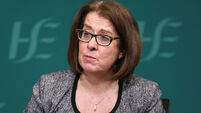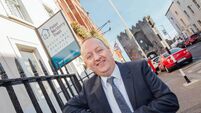Complaints over doctor rudeness double in 2 years

However, the top complaint against doctors is still communication; 91 such complaints were made in 2014, compared to 114 the previous year.
The Medical Council’s 2014 annual report shows a 23% decrease in the overall number of complaints received in the last two years, from 400 to 308.
Following a High Court ruling on what constituted poor professional performance by a doctor, there were less fitness-to-practice inquiries than in previous years with 19 completed, compared to 39 in 2013.
Council president Prof Freddie Wood said the ruling had a significant impact on their work.
In order for a finding of poor professional performance to be made arising out of a single incident or error it had to be deemed “very serious”.
Just four inquiries were held in public last year, compared to 25 in 2013. There were nine inquiries held in private with an additional six concluded at a preliminary private hearing.
The doctors’ regulatory body cannot seek to hold an inquiry in private; such applications must come from another party — the doctor, a witness or complainant.
Of the requests made for private inquiries last year, four were made by the complainant or witness, while five were made by the doctor involved.
Prof Woods, who referred to recent adverse events in the health system, stressed the importance of doctors placing the patient at the centre of all important healthcare decisions.
However, the report shows just four of the complaints received by the council last year were made by the HSE. There was just one made by the health authority in 2013.
Ombudsman Peter Tyndall said recently that a huge number of complaints about clinical judgment in public hospitals had “nowhere to go” because he did not have the power to deal with them.
Because the Supreme Court had set the bar very high for the Medical Council to hold fitness-to-practice inquiries a large gap had developed in the system.
Prof Woods said the low number of complaints received from the HSE had been “consistently raised” by the council with the health authority.
However, while the council was being notified more frequently of concerns about doctors, the HSE was unwilling to become the complainant and the council took over that role.
Council chief executive Caroline Spillane said it was possible that the solution was not about having multiple channels for complaints but about having perceived shortfalls in the quality of care dealt with locally in an efficient and effective manner.
Prof Woods said there was a legal process to deal swiftly with concerns about the safety of a doctor.
“If it comes to the council’s attention that there is concern about a doctor and a public safety issue, within a matter of three days we can hold an emergency meeting and make an application to the High Court.” he said.
The report shows there were 19,049 doctors registered with the council at the end of last year, the highest in a decade.
It also reveals that only half of trainee doctors (54%) intend to practice medicine in Ireland for the foreseeable future, with one in five (21%) not intending to practise here and a further one in four (25%) undecided.
However, half of those intending to leave Ireland aim to return at some stage.
Britain was the most likely destination for trainees followed by Canada, Australia, and the US.











